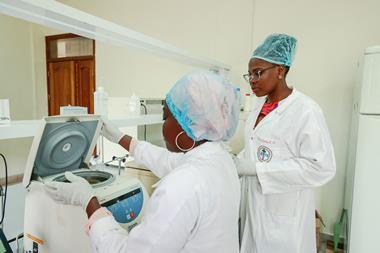Ignoring physiological differences between the sexes is indefensible
Based on my own experiences in drug discovery, I think there are two (nearly opposite) large-scale mistakes that can be made relating to women and their treatment.

One is the historical error of treating the entire female side of the human species as if it weren’t there, or can be easily approximated as slightly different-shaped males. This is how too much medical science operated for a long time. To start with, there was not enough research into the specific medical problems faced by women, but in any case many clinical trials were populated largely by male subjects. Men were considered the default, the human baseline for study. It was simply assumed that most of the time, drugs would have the same effects in women. This sort of corner-cutting was exacerbated by an outright reluctance to add female volunteers to clinical trials, owing to a perception that fluctuating hormone levels and physiological states would just add unnecessary noise to the data.
This is obviously not the way to work. There are real physiological differences between the sexes, even down to details like drug metabolites and clearance, so pretending that just testing males is good enough is sheer clinical malpractice. And that’s why the other major error I mentioned isn’t tenable, either: the effort to believe that all such differences are or were just social constructs. There are plenty of those societal factors laid on top of the biology, for sure, and they have to be recognised for what they are. But that doesn’t mean we can explain every difference we see as having nothing to do with biology, either. Both attitudes end up ignoring the evidence.
A look across the entire landscape of living creatures – both animals and plants – shows that sexual reproduction (and the accompanying sexual dimorphism) has very often been a winning evolutionary strategy. The opportunity for genetic recombination with each generation seems to have been just too useful to pass up. In humans, that leaves the males with a genetic XY background, heir to whatever features (or abnormalities) that get passed along exclusively by the Y chromosome (or by the unmatched X). And it leaves females with having to silence one of their two X chromosomes as well, a process that’s believed to be one of the main drivers behind a significantly stronger tendency to some autoimmune diseases such as lupus. A close study of biology teaches us that every system in a living creature is hooked together with the others in numerous and often surprising ways, and thus everything is a tradeoff.
There are real physiological differences between the sexes, even down to details like drug metabolites and clearance
The potential for childbearing itself is, of course, a major biological difference – no matter what path is taken to get there (consider the species of fish and other animals that can switch over depending on conditions!) I really believe that everyone with biomedical training is struck anew when they experience pregnancy, as either partner in the process: you see the size and range of the changes that have to happen during gestation and think ‘I can’t believe that this actually works’. But there’s extraordinary evolutionary pressure on it to make sure that it does. And it illustrates as nothing else can the folly of attempting to act as if these processes aren’t all that meaningful and don’t really need to be taken into account in medical science.
Unfortunately, there’s a strong human tendency for a mode of thinking that I’d describe as ‘someone has to lose’. You can look at male–female differences and try to decide which of the two is superior, but in my own view this is truly counterproductive. My liver almost certainly has higher levels of enzymes like alanine and aspartate transaminases (ALT and AST) than hers, but she almost certainly expresses more CYP3A4 enzyme than I do – so we will metabolise some drugs differently. We both have bones, but she is at greater risk for osteoporosis than I am, while I am more likely to develop Parkinson’s even though we both have substantia nigra tissue in our midbrain regions. At a more obvious level, like many men I am taller and stronger than my wife. But like many women, she is more likely to outlive me.
The split into male and female has helped a great many species to thrive, but it leaves each partner with vulnerabilities at the same time. Let’s be honest about them – all of them, and the strengths of each – and take the opportunity to understand how we grow and survive.

















No comments yet